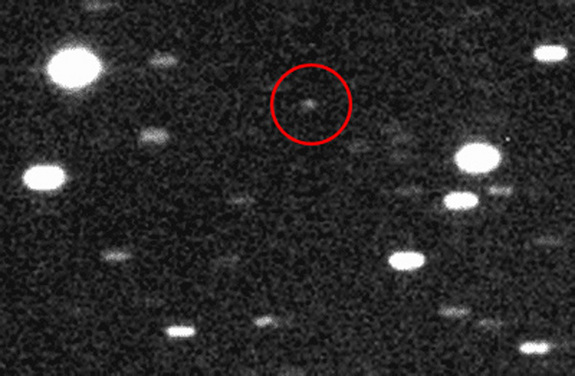
© ESA/TOTAS Survey TeamObservations coordinated by ESA's Space Situational Awareness programme have led to the discovery of a previously unknown near-Earth object, asteroid 2011 SF108 in September 2011. The asteroid orbits the sun in a path that brings it within about 18 million miles (30 million km) of Earth.
A team of amateur astronomers has discovered a previously unknown asteroid in orbit that brings it near the Earth, highlighting the contributions regular folks can make to planetary defense, scientists announced Wednesday (Oct. 12).
The skywatchers spotted the asteroid, which is known as 2011 SF108, in September using a telescope in the Canary Islands. While 2011 SF108's orbit appears to bring it no closer to Earth than about 18 million miles (30 million kilometers), it still qualifies as a near-Earth object - the class of space rocks that could pose a
danger to our planet.The team took advantage of an observation slot sponsored by the European Space Agency's Space Situational Awareness (SSA) program to make the find, according to an ESA announcement.
"As volunteer work, it is very rewarding," said Detlef Koschny, head of near-Earth object activity for SSA, in a statement. "When you do spot something, you contribute to Europe's efforts in defending against asteroid hazards."

